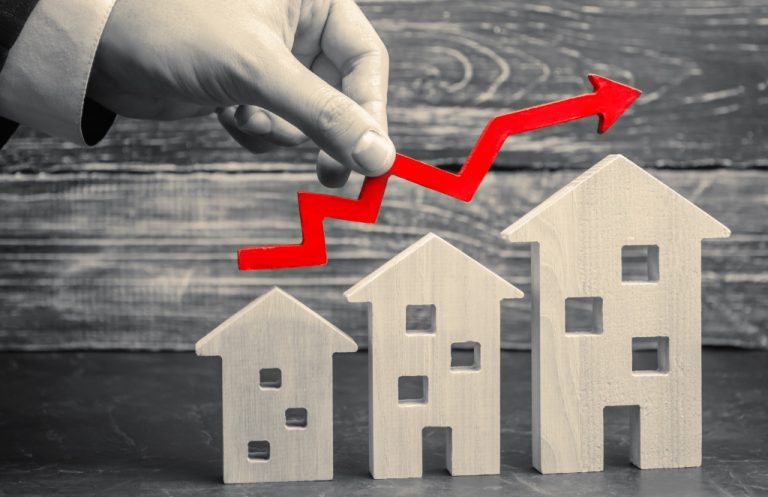Home prices across the globe were in an increasingly upward trend in 2021. According to a report by Knight Frank, as of the third quarter, there was a 9.4 percent year-on-year increase in the average home price in 54 out of 56 countries monitored. There was just a 9.2 percent increase in the second quarter in comparison.
When the pandemic started, only 13 percent of housing markets had yearly average price increases of more than 10 percent. By the third quarter of 2021, 48 percent of housing markets had annual average price increases of over 10 percent. The highest growth was in South Korea at 26.4 percent. This was followed by New Zealand at 21.9 percent, Sweden at 20.3 percent, Australia at 18.9 percent, and the United States at 18.7 percent. However, there seems to be a turning of the tide expected this year.
Projections for 2022

In its 2022 forecast for 11 major cities in the world, Knight Frank sees housing price growth increases for luxury residential properties in only four cities and a decrease in the rest. The growth of prices will increase from two percent to seven percent in London, from one percent to five percent in New York, from three percent to six percent in Madrid, and from three percent to five percent in Singapore. Meanwhile, growth rates of prices will decrease from 20 percent to seven percent in Auckland, 22 percent to 10 percent in Miami, from 16 percent to eight percent in Los Angeles, ten percent to six percent in Geneva, from 12 percent to nine percent in Sydney, from eight percent to five percent in Hong Kong, and from five percent to four percent in Paris. Overall, the average price growth for all 11 cities in 2021 was nine percent, to decrease to seven percent in 2022.
In the United States, in general, experts also foresee that the rate of housing price increases will slow down, according to MarketWatch. From an almost 20 percent increase in 2021, the National Association of Realtors expects only a 5.7 percent increase in 2022. Realtor.com expects even lower at 2.9 percent. Some areas are expected to have greater probabilities of price reductions. According to the Market Risk Indicator (MRI) of CoreLogic, there is a 50 to 70 percent probability of home price decreases in Worcester, Massachusetts; Prescott, Arizona; and Lake Havasu-Kingman, Arizona this year. Meanwhile, there is a 25 to 50 percent probability of home price decreases in Springfield, Massachusetts, and Merced, California.
According to propertyupdate.com, the prices of home and land packages will continue to rise in Australia but not at the same rate as the last two years. One of the reasons will be a decrease in demand as Covid-19 continues to affect everyone. Those who can afford to buy a residential property have already done so. There has been minimal to moderate growth in wages, so there will be fewer people left who will have the capacity to purchase. The Australian Prudential Regulation Authority (APRA) is also imposing controls to slow down price increases in the market.
According to ABC News, Westpac forecasts that the growth of Australian housing prices in 2022 will slow down to eight percent while Commonwealth Bank predicts it to be at seven percent, Australia and New Zealand (ANZ) Banking Group Limited forecasts six percent, and National Australia Bank (NAB) forecasts 4.9 percent. This is compared to a growth of 22 percent in 2021. ANZ predicts that the highest rate of growth this year will be in Brisbane.
In Europe, the Fitch Ratings Global Housing and Mortgage Outlook predicts that housing price increases in 2022 will be slower compared to 2021. Again, one of the reasons will be that demand will decrease because prices are beyond the reach of many. The largest decrease in price growth will be in the United Kingdom, from nine percent in 2021 to between one and three percent this year.
Housing Affordability Worldwide
A slowdown in the price growth of residential properties around the world will be beneficial to the population. Still, according to data from Numbeo for 2022, only two countries have a mortgage-to-income ratio of less than 30 percent. These are Saudi Arabia at 20.51 percent and the U.S. at 28.53 percent. Only five countries have a ratio between 30 and forty percent. These are Puerto Rico at 31.2 percent, the United Arab Emirates at 32.39 percent, South Africa at 34.15 percent, Oman at 35.59 percent, and Denmark at 39.54 percent.
This means that owning a house is still unaffordable for people in many countries. If they can get a mortgage, a large portion of their income will go to monthly payments at the expense of other basic needs. Countries need to do more to lower the prices of housing for the good of their people.



